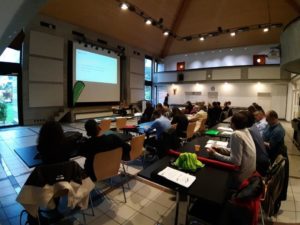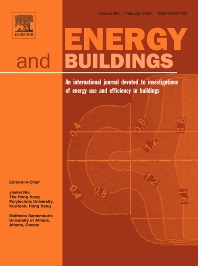BOLZANO (IT)
SBE 21 – Criteria for building types selection in preserved areas to pre-assess the Building Integrated Photovoltaics solar potential – The case study of Como land area
Some of the BiPV Meets history project results have been presented at the International Conference Sustainable Built Heritage (SBE21), which gives framework for Renovating historic buildings for a low-carbon built heritage.
The contribution “Criteria for building types selection in preserved areas to pre-assess the Building Integrated Photovoltaics solar potential – The case study of Como land area” authored by Alessia Peluchetti (R2M Solution), Giulia Guazzi (R2M Solution), Elena Lucchi (EURAC Resarch), Isabella Dall’Orto (Regione Lombardia) and Cristina Polo López (SUPSI), have been presented at the international conference SBE21. The paper was presented online by Alessia Peluchetti on the 14th of April 2021 by mean of ZOOM online platform and it was part of a session on Renewable energy integration in historic buildings, areas, and landscapes.
Intro
European Union (EU) aims at achieve decarbonization by 2050, and to succeed in this goal sets a series of obligations, including the use of renewable energy sources.
In Europe a wide range of existing buildings that need renovation exists, nevertheless, a rather substantial part of them has monumental or landscape values that must be preserved and which consequently represent an obstacle in the implementation of renewable energy sources. BiPV systems offer a possible solution to this dilemma, these systems in fact allow to improve the energy performance of historic buildings, preserving their monumental and landscape values.
As part of the international conference Sustainable Built Heritages (SBE 21), held in virtual mode from 14 to 16 April 2021, some of the results related to the BiPV meets history project were presented, which aims to spread the use of BiPV for energy and aesthetics recovery of historic and protected buildings.
Paper
The paper presents the methodology developed to evaluate the potential application of Building Integrated Photovoltaics systems (BIPV) in heritage buildings and protected land areas. Scope of this study is to evaluate the compatibility between BIPV systems and the most diffused building types in a specific area. The area considered to map and assess the most prevalent building types is the Como province, as representative of the cross-border between Italy (IT) and Switzerland (CH). The methodology followed for the buildings classification and assessment can be summarized in the following steps: (i) selection of the study area with the presence of a variety of building types, landscapes, and territorial specificities representative of the area; (ii) building types mapping to define recurrent building characteristics and (iii) database creation to collect all the building types.
The study resulted into a building classification database, which lists a series of parameters and identifies the main architectural elements and compatible criteria with the BIPV application. The results of the analysis lay the basis to identify the degree of integrability of BIPV technologies in the different building types present on the territory, facilitating greater integration of these technologies in protected areas, respecting the historical and artistic characteristics of the heritage and landscape.










